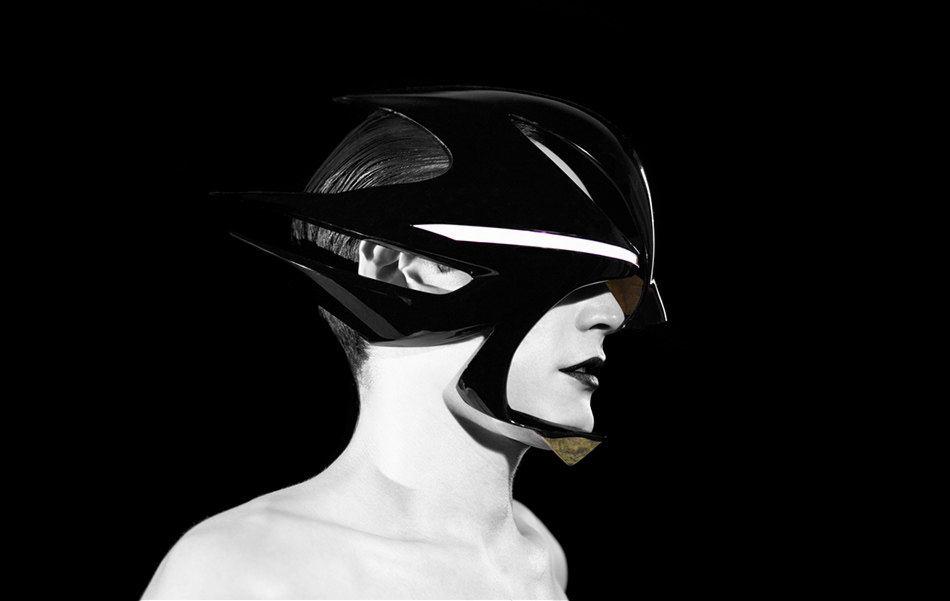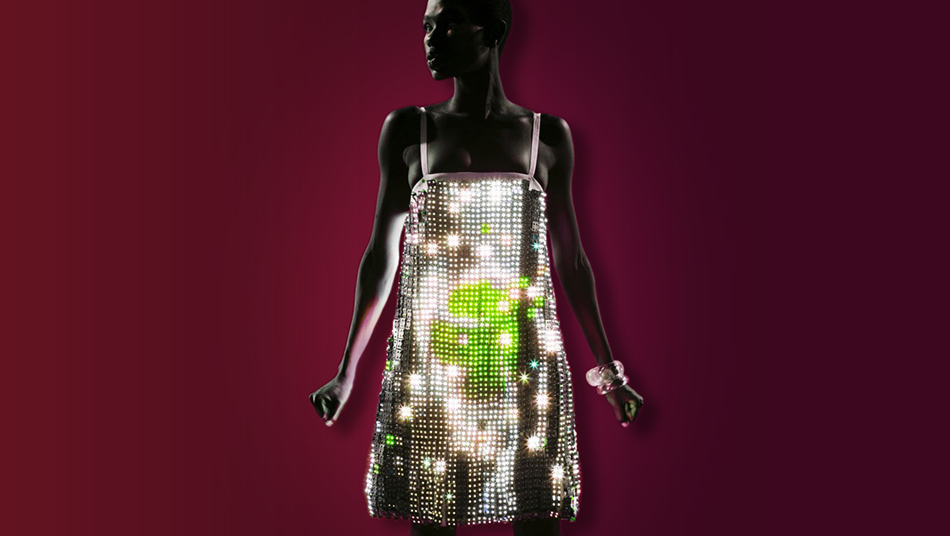
Where are wearable technologies headed? A lot has been written lately and several products have been coming out. Some we are already beginning to wear and experience (mainly smart watches and wrist devices in general), other evolutions still amaze us conceptually but are yet to become part of our everyday life (and the google glasses might be the most known example).
To state the obvious, we have been wearing technology perhaps since the invention of eyeglasses in the 12th century. And our wrist watches qualify as wearable tech as well. So are we talking about something new here? Not really. It is rather about the giant leap technology has made in these last few years, which has led to entirely new possibilities in this field. But it must be said: a few big names in fashion design had already started experimenting quite a few years ago, sowing the seeds we see sprouting today.
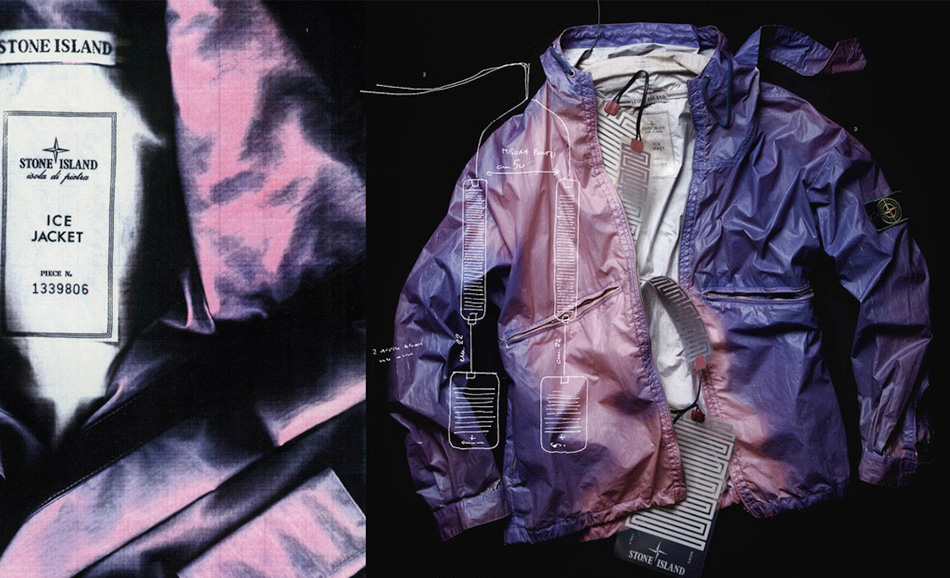
How not to think about Hussein Chalayan and his video dresses with 15,000 leds embedded in the fabric, or his robotic collection of Spring/Summer 2007? CP Company – the brand by revolutionary designer Massimo Osti – has also been leading the way with its transformable outfits (jackets that would turn into tents, kites and even couches) but most importantly with ground-breaking innovations in fabric development, for example with their thermo-sensitive fabric, changing colour according to temperature as in the iconic Ice Jacket. Iris Van Herpen too has always been fascinated by the possibilities offered by technology in fashion, from 3D printing to the latest innovations that nanorobotics offer in fabric tech.
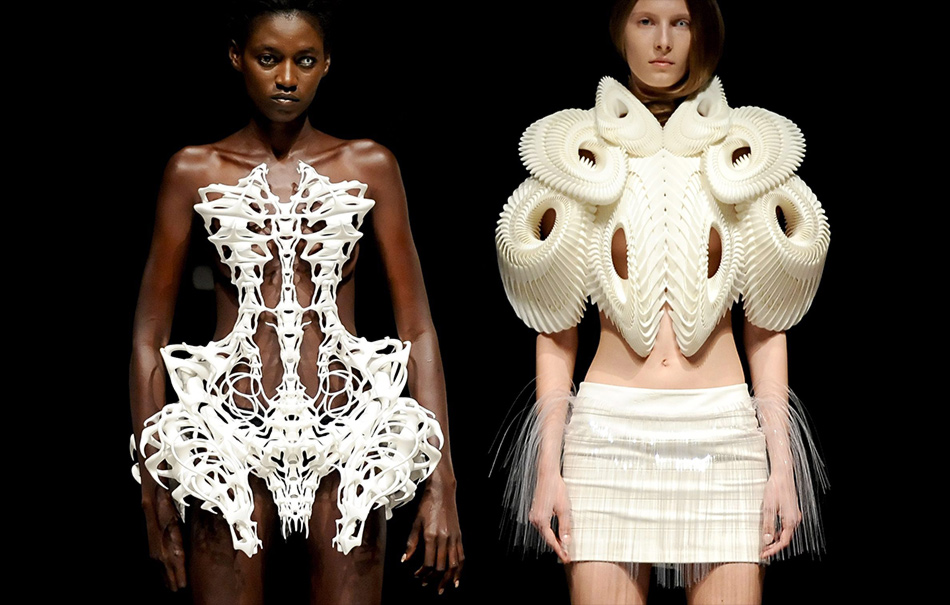
At ITS we have been witnessing this revolution as well through the innovative proposals of some of our finalists. Yuima Nakazato’s work often appears to have been produced in a space engineering facility, for instance: in one of the collections he presented at ITS (Yuima was a finalist twice…) he featured an untearable, super-strong fabric developed by NASA for space suits, and he jumped into 3D printing as soon as machines were big enough to print out actual outfits (2014 collection). Shoe designer Chau Har Lee was a true technological innovator with her 2009 collection: inspired by motorcycle technologies she researched materials like titanium and carbon fiber to come up with heel designs which would have been impossible to develop with other materials. And at ITS 2015 the futuristic work of Yang Wang literally amazed us, with his sci-fi collection of pieces that hint at a future where not only will we be wearing technology: pieces might actually be hovering around us, modifying and influencing our halo space.
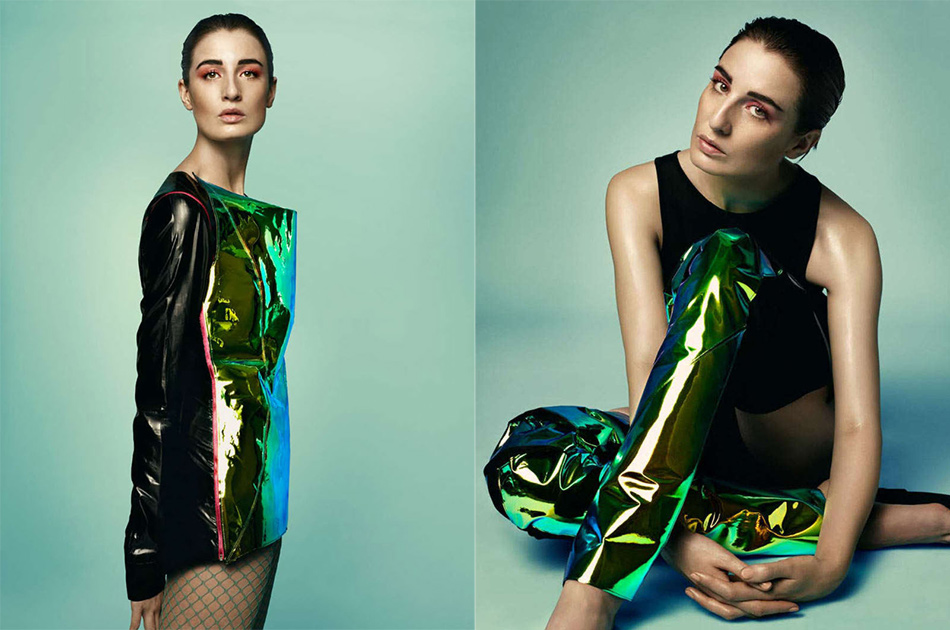
So what are we to expect in the near future and what is out there on the long-term? Basically what we have seen for now are a lot of gadget devices we can mostly wear on our wrists: from the iWatch to the pletora of fitness devices recording heartbeat and more, it would almost appear this market is already saturated before starting. As far as 3D printing is concerned (which lacks the most fun part, interactivity with the user) we are beginning to witness printed outfits though it will take some time before these actually become indistinguishable from conventional ones.
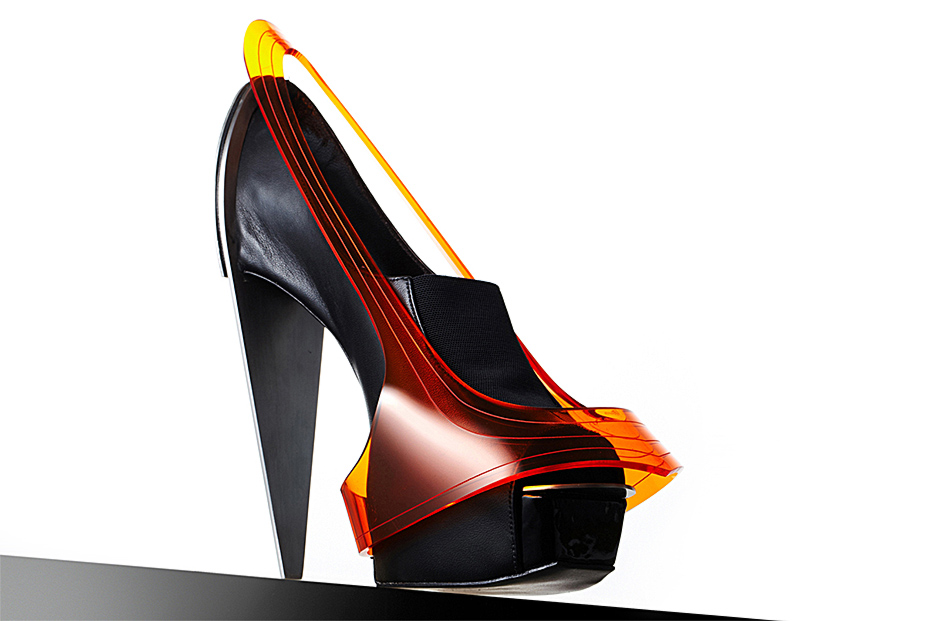
It is true many believe the true wearable technology revolution is yet to come, and it will be an invisible fabric revolution. It might be much closer than we think if a brand like Ralph Lauren is already headed in that direction. The American brand has woven sensors into the nylon of a tennis tech shirt tracking everything from heart rate to breathing patterns and are testing it in the pro tennis circuit. And nanotechnologies, together with engineered materials like graphene (207 times stronger than steel, an excellent conductor of heat and electricity and nearly transparent) are paving the way for clothes with technology woven inside the fabric, entirely invisible. Imagine the internet of everything worn as a common t-shirt that turns into a video screen, changes colour and tightens the links of the threads in the fabric if it detects a lower temperature. Something invisible, until you ask it to reveal itself. “Any sufficiently advanced technology is indistinguishable from magic” said Arthur C. Clarke. Might we experience this magic with the 2016 generation of ITS talents?
